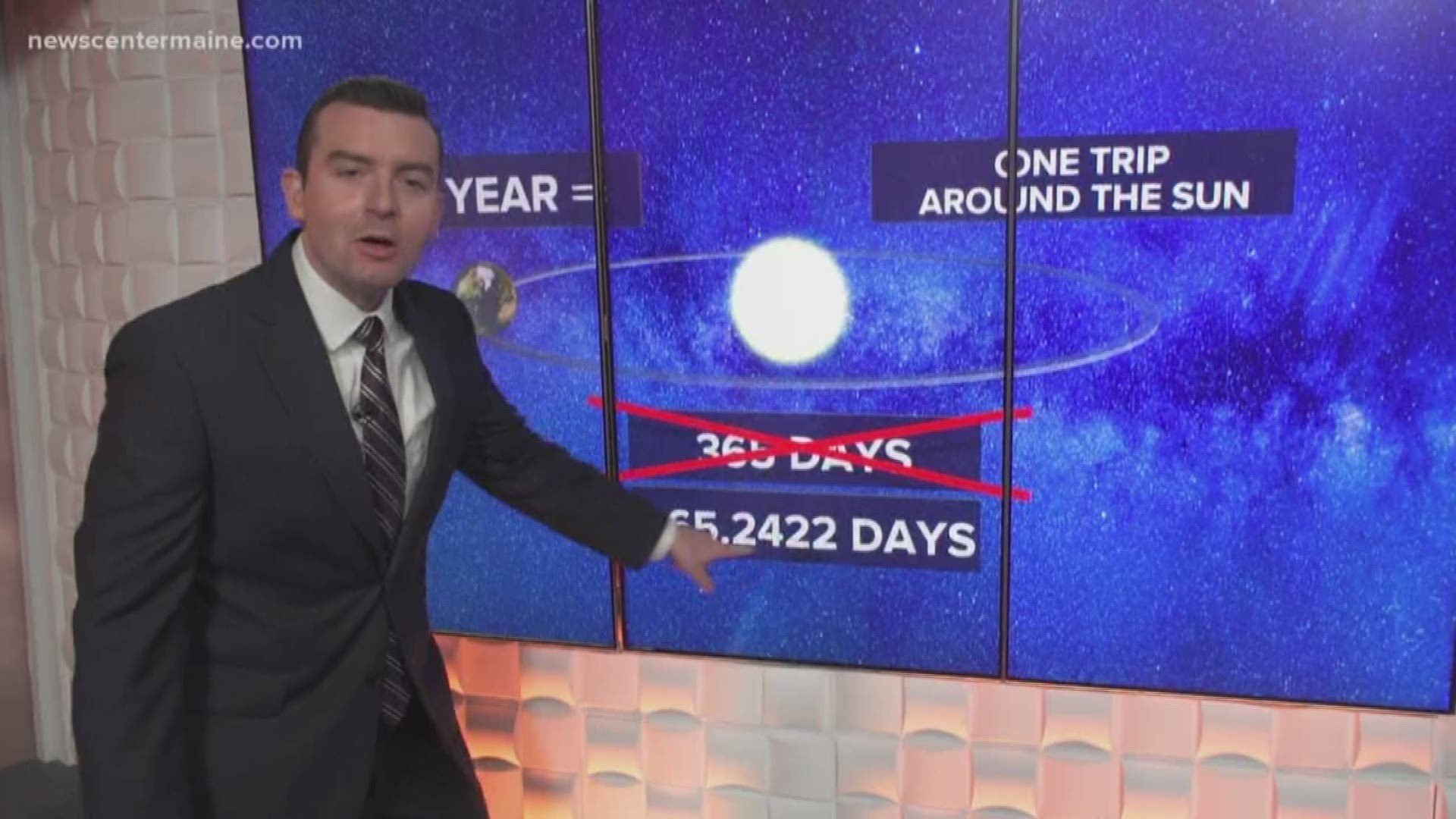MAINE, USA — Welcome to the last week of February. This year, we get an extra day; February 29 makes an appearance on our calendars this Saturday.
So what makes a leap year?
First, we have to define what a year is: One year is one trip -- or revolution -- around the sun.
365 days, right?
Wrong. Technically it takes 365 days plus almost one quarter day -- or 5.8 hours.
Over time, that difference adds up. Without leap day, in 100 years, our calendar would be 24 days off.
The solution? Add one day to the month of February every four years.
But even that solution isn't perfect, we'd be making up a little too much time -- 11.2 minutes too much each year.
In 100 years, our calendar would be 18 hours off.
So, to make up for this difference, we actually SKIP some years that would otherwise be a leap year. If a leap year it falls on the start of a century, unless that year is divisible by 400, we skip it.
We skipped 1900, 1800, didn't skip the year 2000, and will skip 2100, 2200, and 2300. We won't skip 2400.
Accounting for this almost makes up the gap. But remember, it's not perfect.
At this rate, it will take over 3,300 years for our calendar to be 1 day off -- something we won't have to worry about.
RELATED: Why do we have a “leap year”?
RELATED: Why is 2020 a leap year?

